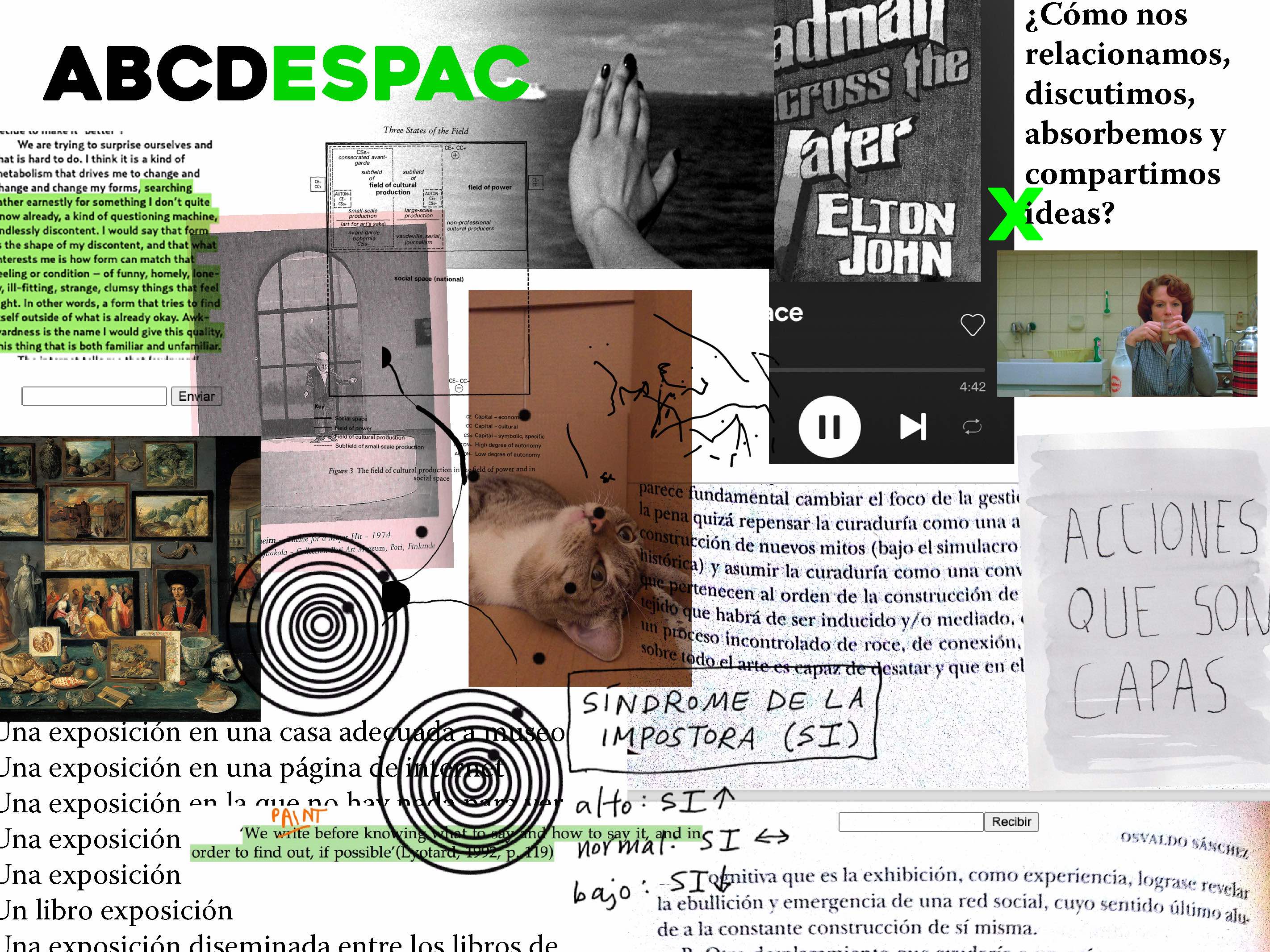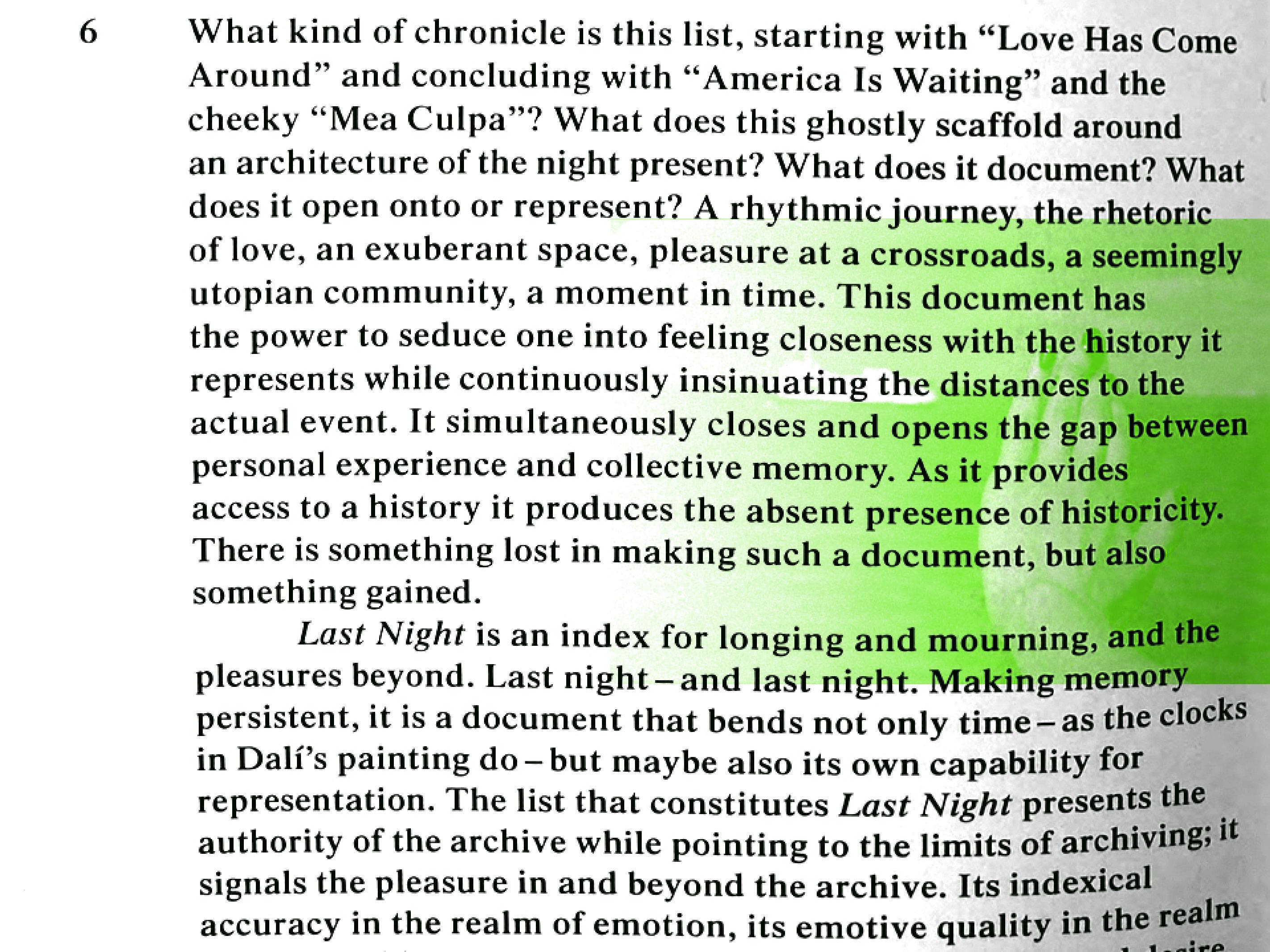
Interview
ABCDESPAC. Interview with Laura Orozco and Alfonso Santiago.
by Eric Valencia
Reading time
6 min
I spoke with Laura Orozco and Alfonso Santiago about ESPAC’s most recent project. We got to know each other in a videoconference. They immediately conveyed to me the impetus behind the work they have done for some time on ABCDESPAC: their answers had the tone of complicity one finds among friends who excitedly recount a shared trip. The project’s idea came from a series of experiences accumulated across previous projects, as well as from the change in rhythm implied by the ceasing of public activities due to the sanitary measures that have marked our lives since 2020. It’s mainly a publishing project, currently in process, in which several collaborators have been invited to choose, out of the alphabet, the first letter of a concept, which they would then develop together with the ESPAC team.

Eric Valencia: Where did this project come from?
Alfonso Santiago: For three years we thought that we couldn’t depend on the exhibition space, having just moved to the house in Anzures. That the space was much smaller led us to think about other ways of turning out projects; that’s how we created another publishing line. Last year we celebrated five years of ESPAC, and we wanted for there to be an interval in which we could think about what had happened during those years that we practically never stopped working. The pandemic became a scene of uncertainty, and this project became a space that would allow us to subvert the mode of production to which we were accustomed.
Laura Orozco: The project came about a little before 2019. I was beginning to be invited to give classes and lectures, especially about how ESPAC had been built, so that, for all these people in training, I could help them to understand how to build a space like this. But since we were working nonstop at ESPAC that was impossible for me. So Alfonso said to me: “Hey, why don’t we make our next big publishing project—following the collection catalog—be a kind of ABCs of ESPAC, in which all of us, from all areas, could share knowledge and reflect.”
We set out to make a book consisting of long conversations, in economic and physical spaces that would allow us to invite collaborators, and where they could talk about their own interests. It all made us eager to reveal processes. We feel that many of the institutional processes take place behind the scenes—the knowledge is somewhat hidden from the public—and with this project we want to talk about all these areas more openly. We want to locate those middle points between the investigations, the personal interests of the collaborators with ESPAC and the institutions in Mexico.
When the pandemic began, everyone wanted to generate content and to give talks to the public. At that time, we felt that if we couldn’t invite collaborators for a coffee or a beer to generate bonds or hospitality, then we weren’t in a position publish anything immediately. Rather, we decided to open up spaces [through both the open process and the book] so that everyone could say whatever they wanted and we could allow ourselves to make mistakes. We wanted to talk about what worried us, about what was going on with us during the pandemic, the ways in which we wanted to work, about what we liked and what we didn’t like about our slog.

EV: On the ESPAC website there’s a text describing this alphabet as an “experimental curation.” What does it mean to plan a project in those terms?
AS: It comes from the idea of blurring the roles from which the projects are made. For us that’s always been very important. For example, in our last project, the educational program, the publication, and the exhibition itself were considered, from the outset, as three elements of the same project, instead of one’s depending on the other.
LO: We didn’t want to put out a book that was only theoretical or just a manual, but rather to soak it in everything: to think of it at the same time as exhibition, book, and guide. Alfonso and I are very clear that there was a lot of uncertainty at the beginning, since the collaborators were going to be the ones delineating the book’s form and content…it thrilled us, but it also scared us because we couldn’t really see it yet. The collaborators come from many areas, with training in registries, in the care of collections, in management, as well as in art. Among their proposals, there are poems, works of fiction, letters, drawings, games, texts, opinion essays, hybrid texts, and also highly theoretical texts. And it thrills us, since ESPAC navigates among all those places and they’re all kinds of writing: writing in the broad sense.
The whole project is like a wager, an attempt, to see to see if it all comes out, to see if we can subvert the processes and if there are other ways of doing things, of approaching different media in order to generate content and knowledge.
EV: What public activities do you have planned for ABCDESPAC?
AS: We’re planning for the publication to come out this summer. That’s where our efforts are, as well as in translating it to the website. But the book isn’t the endpoint, since once it’s ready we’re going to socialize it. That’s going to be the starting point for other activities.
LO: We’re open to reacting according to the context. The project was also designed in order to create guides that would become a program for ESPAC—in form, substance, content, and discourse. We call this next part “unfoldings” (desdoblamientos). At the end of the summer we’re going to carry out the first projects emerging from ABCDESPAC, which are going to have many dimensions: some will be private, others public, there might be residencies, another book, an exhibition…the trick is just to learn, to talk with all the collaborators, and gradually to bring out projects that originate in the logic of sharing.

The ABCDESPAC project currently has a public aspect, which can be viewed on its website: https://espac.org.mx/ABCDESPAC
Translated to English by Byron Davies.
Published on Jan 28 2021